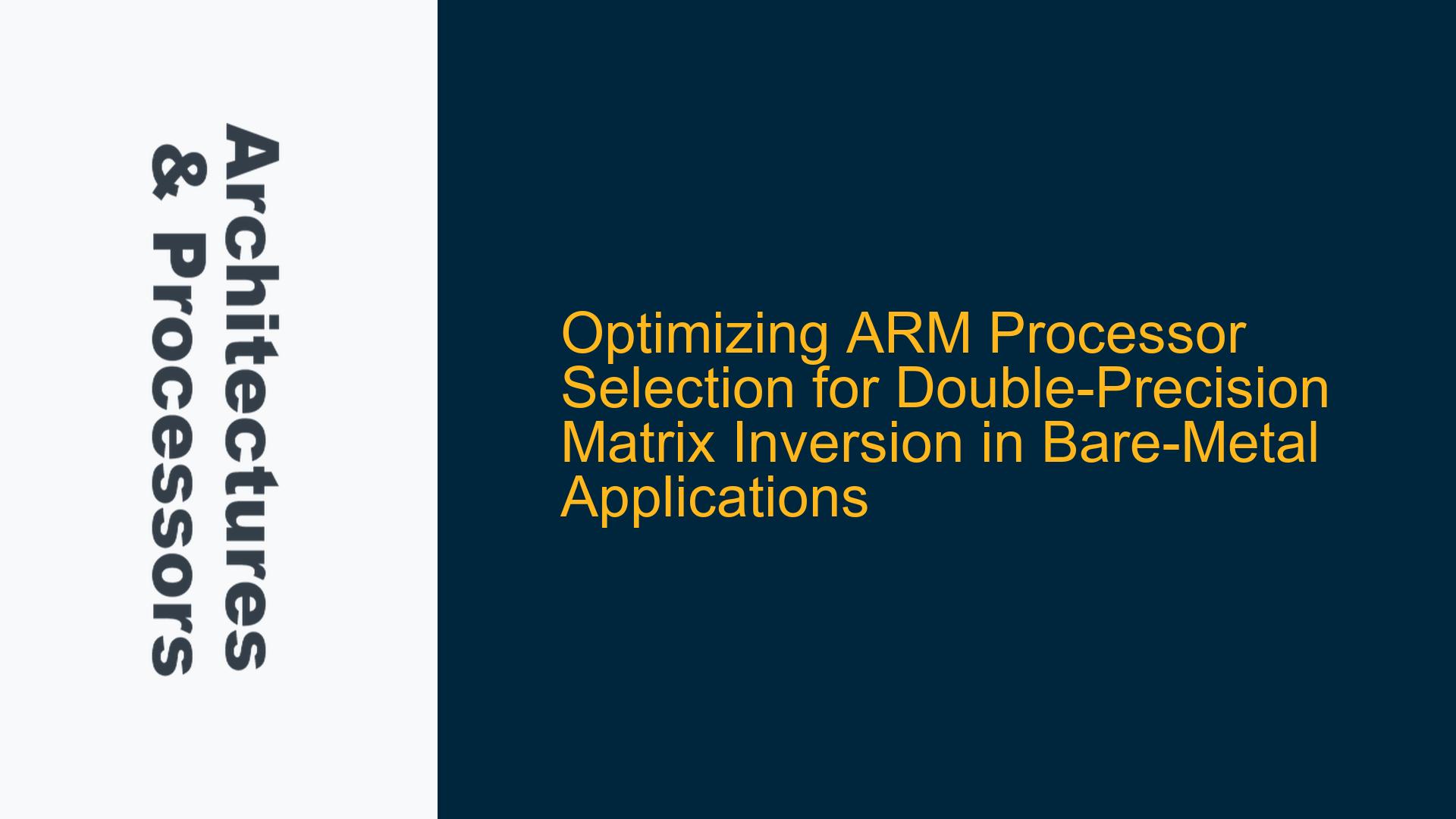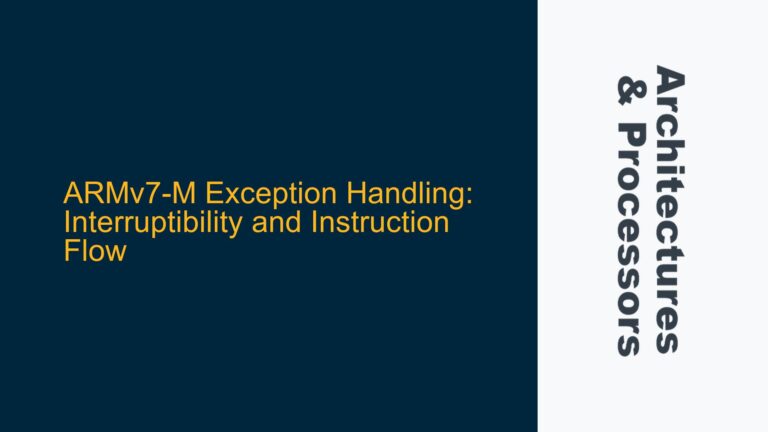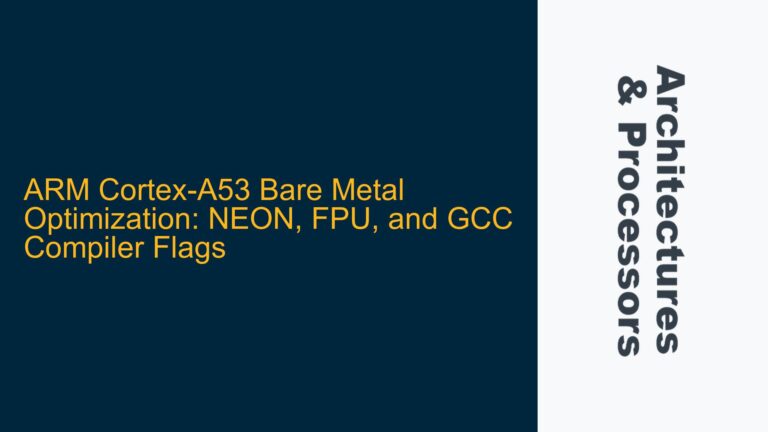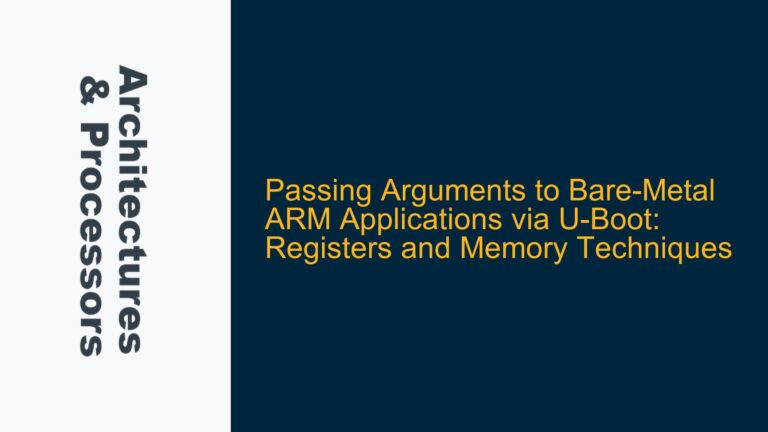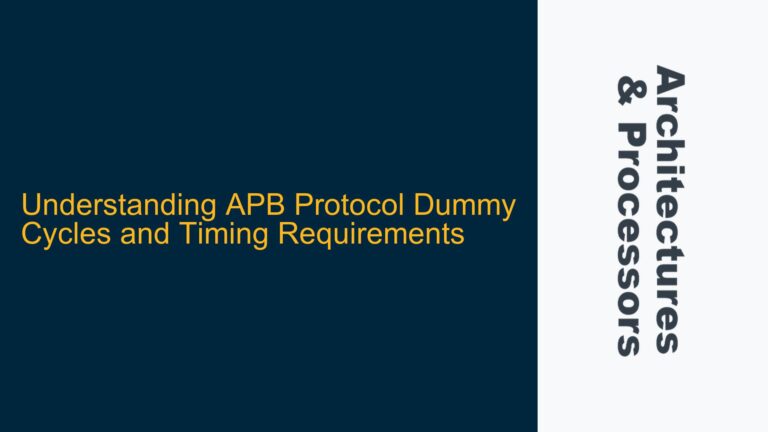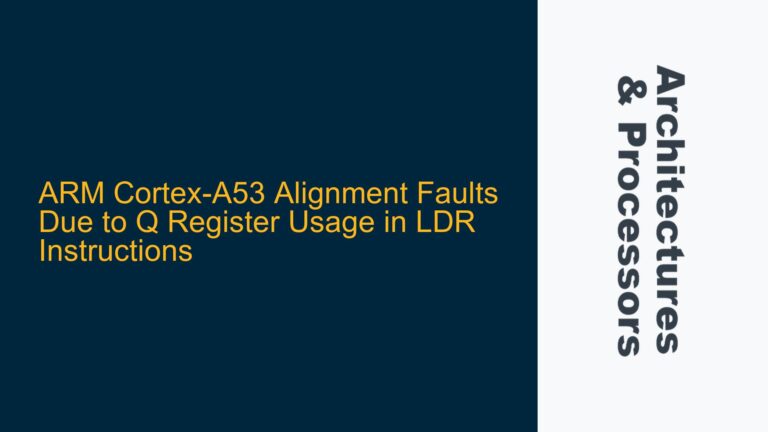ARM Cortex-M7 vs Cortex-A Series for Double-Precision Matrix Inversion
When selecting an ARM processor for a project involving double-precision matrix inversion using the Cholesky algorithm, the choice between Cortex-M and Cortex-A series processors is critical. The Cortex-M7, while capable of handling double-precision floating-point operations, may not provide the necessary performance for inverting a 1.2MB matrix within a 30ms window. The Cortex-A series, particularly those with SIMD capabilities like the Cortex-A53 found in the Raspberry Pi 3, offers a more robust solution for such computationally intensive tasks. The Cortex-A series processors are designed with higher clock speeds, larger caches, and advanced floating-point units, making them more suitable for matrix operations that require both speed and precision.
The Cortex-M7, despite its double-precision floating-point unit (DP FPU), is primarily optimized for real-time control applications rather than heavy computational tasks. Its cache sizes are generally smaller, which could lead to frequent cache misses when dealing with large matrices, thereby increasing latency. On the other hand, Cortex-A processors like the Cortex-A53 not only support double-precision operations but also offer SIMD (Single Instruction, Multiple Data) capabilities, which can significantly accelerate matrix operations by processing multiple data points in parallel.
Impact of Cache Size and Memory Bandwidth on Matrix Inversion Performance
Cache size and memory bandwidth are pivotal factors in determining the performance of matrix inversion algorithms. For a matrix size of 1.2MB, the L2 cache size becomes a bottleneck if it cannot accommodate the entire matrix. The Cortex-M7 typically has an L2 cache in the range of 16KB to 64KB, which is insufficient for a 1.2MB matrix. This results in frequent data transfers between the DDR memory and the cache, leading to increased latency and reduced performance.
In contrast, Cortex-A series processors often feature larger L2 caches, sometimes up to 1MB or more, which can significantly reduce the number of cache misses. Additionally, Cortex-A processors generally have higher memory bandwidth, allowing for faster data transfer rates between the processor and DDR memory. This is crucial for maintaining the performance of matrix inversion algorithms, which require rapid access to large datasets.
Leveraging ARMv8-M Floating-Point Extensions and SIMD for Performance Gains
The ARMv8-M architecture introduces floating-point extensions that support double-precision operations, which are essential for the Cholesky algorithm. However, the real performance gains come from leveraging SIMD capabilities, which are more prevalent in Cortex-A series processors. SIMD allows for the parallel processing of multiple floating-point operations, thereby reducing the overall computation time.
For instance, the Cortex-A53’s NEON technology provides SIMD support that can handle up to 8 double-precision floating-point operations in parallel. This can lead to a substantial reduction in the time required for matrix inversion. Furthermore, the ARMv8-M architecture’s floating-point extensions, while beneficial, do not offer the same level of parallelism as SIMD, making Cortex-A processors a more suitable choice for high-performance matrix operations.
Implementing Data Synchronization Barriers and Cache Management
To ensure optimal performance, it is essential to implement data synchronization barriers and effective cache management strategies. Data synchronization barriers prevent out-of-order execution, ensuring that all memory operations are completed before proceeding to the next instruction. This is particularly important in matrix inversion algorithms, where the order of operations is critical to maintaining numerical accuracy.
Cache management involves techniques such as cache preloading and cache invalidation to minimize cache misses. Preloading the cache with the necessary data before starting the matrix inversion can reduce latency, while cache invalidation ensures that stale data does not interfere with the computation. These strategies are more effectively implemented in Cortex-A series processors due to their larger cache sizes and higher memory bandwidth.
Evaluating Processor Speed and Clock Cycles for Matrix Inversion
Processor speed, measured in MHz, is a key factor in determining the performance of matrix inversion algorithms. A processor speed of at least 700MHz is recommended for handling the computational load of inverting a 1.2MB matrix within 30ms. However, clock speed alone is not sufficient; the number of clock cycles required per operation also plays a significant role.
Cortex-A series processors, with their higher clock speeds and optimized instruction pipelines, can execute more instructions per clock cycle compared to Cortex-M processors. This results in faster computation times for matrix inversion. Additionally, the Cortex-A series’ ability to handle multiple instructions in parallel through SIMD further enhances performance, making it a more suitable choice for time-sensitive applications.
Conclusion: Selecting the Right ARM Processor for Matrix Inversion
In conclusion, selecting the right ARM processor for double-precision matrix inversion involves a careful evaluation of several factors, including cache size, memory bandwidth, floating-point capabilities, and processor speed. While the Cortex-M7 offers double-precision support, its smaller cache sizes and lower memory bandwidth make it less suitable for large matrix operations. The Cortex-A series, with its larger caches, higher memory bandwidth, and SIMD capabilities, provides a more robust solution for achieving the required performance within the 30ms window.
By implementing effective cache management strategies and leveraging SIMD for parallel processing, Cortex-A series processors can significantly reduce the time required for matrix inversion, making them the preferred choice for high-performance embedded systems.
